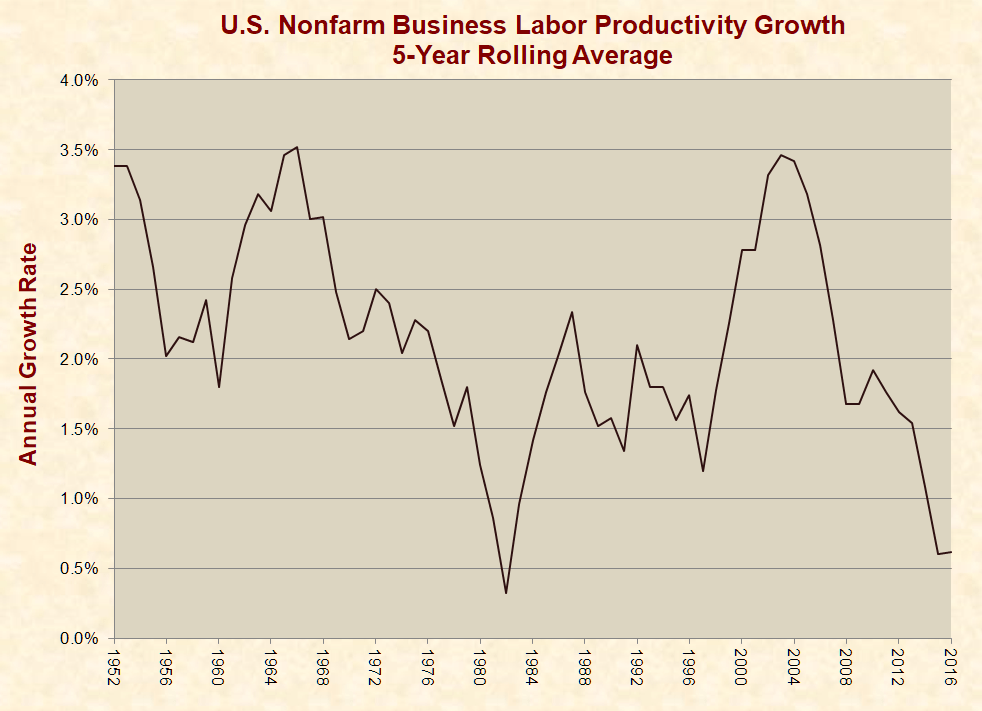by James D. Agresti
In a New York Times article about President Trump scaling back regulations, reporters Binyamin Appelbaum and Jim Tankersley report “there is little historical evidence tying regulation levels to” economic growth. They support this sweeping claim only with a quote from Jared Bernstein, a former chief economic adviser to Vice President Joe Biden, who says: “The notion that deregulation unleashes growth is virtually impossible to find in the data.”
In reality, there is a wealth of data indicating that regulations harm economic growth, and economists have identified numerous mechanisms by which this can occur. This includes but is not limited to:
- preventing workers from using the most efficient means of production. In the words of an economics book published by Johns Hopkins University Press, “The sectors that provide services related to human capital investments [like education and healthcare] may produce inefficiently because regulations preclude efficient production,” which “may result in much greater costs of achieving specific investments than would be possible with fewer regulations.”
- diverting people from productive work. For example, federal tax laws and regulationsrequire taxpayers to spend 6.1 billion hours per year filling out forms and performing other tax compliance tasks. This is more than the combined work time of every K–12 teacher in the U.S.
- preventing companies from developing and producing new products. Per a 2003 report by the Organization for Economic Cooperation and Development, industry productivity “is negatively affected by strict product market regulations, especially if there is a significant technology gap with the technology leader. There is also evidence of an indirect negative effect of strict product market regulations on productivity via their impact on innovation activity.”
- raising the costs of energy—which, per the textbook Introduction to Air Pollution Science—harms “public health and economic prosperity.” As an example of this, regulatory costs for hydroelectric power plants increased from 5% of the total costs of generating hydroelectricity in 1980 to 25–30% of the costs in 2010.
- killing small businesses that don’t have the resources to comply with complex regulations. For example, a 2015 working paper from the Harvard-Kennedy School of Government found that regulations are likely the main reason why community banks’ share of the U.S. banking market fell from more than 40% in 1994 to around 20% in 2015. This is because “larger banks are better suited to handle heightened regulatory burdens than are smaller banks, causing the average costs of community banks to be higher.” Likewise, a 2016 paper in the DePaul Business and Commercial Law Journalfound that the 2010 Dodd-Frank “Wall Street Reform and Consumer Protection Act”:
could actually be enhancing the consolidation of the banking industry, in direct opposition to its principal purpose—eliminating “too big to fail” banks. While the industry has intentionally trended towards consolidation in the past, the current dramatic increase of consolidation of banking assets is likely an unintended consequence of increased regulation. This consequence comes from astronomical regulatory costs passed on to community banks, as well as increased capital requirements that diminish these banks’ competitiveness. Dodd-Frank has exacerbated this problem, and it will likely result in further increased consolidation of the banking industry.
These and other effects of regulation are extremely important, for as explained in the textbook Microeconomics for Today, countries with lower economic growth “are less able to satisfy basic needs for food, shelter, clothing, education, and health.”
Pros and Cons
Regulations can also have significant positive effects, and debates often rage over whether the positives outweigh the negatives or vice versa.
In 2014, the Obama administration issued a draft report estimating the costs and benefits of major federal regulations from 2003 to 2013. It concluded that the costs were somewhere between $57 billion and $84 billion, while the benefits were much greater at $217 billion to $863 billion.
Conversely, the authors of a 2013 paper in the Journal of Economic Growth conducted a study that found the effects of federal regulations on the U.S. economy have been “negative and substantial.” They estimate that GDP would now be more than three times larger if federal “regulation had remained at its 1949 level.”
In truth, the pros and cons of regulations are often difficult to objectively quantify. Per the textbook Microeconomics for Public Decisions, it can be “relatively easy” to craft a cost-benefit analysis to “produce a desired outcome,” and “it is practically impossible to predict all the future impacts” of a government program, “let alone their magnitudes and their probabilities of occurrence.”
Historical Data
The above-cited study in the Journal of Economic Growth compares time-series data on “the extent of federal regulation in the United States” to economic “output and the factors that produce it.” Per the study, this data indicates that regulations have “strong and robust negative effects” on economic growth, and these “results are qualitatively consistent with those obtained from studies using the various cross-country and panel data sets on regulation.” This alone disproves the Times’ and Bernstein’s claim that there is little data linking regulation to economic performance.
However, this study, like the vast majority of studies in the social sciences, only shows associations, and association does not prove causation, because other factors may be at play. Also, the statistical methods used to perform such analyses are prone to various pitfalls. Thus, such studies cannot prove with 100% certainty that regulations have harmed economic growth. They only show—contrary to the Times—that there is ample evidence tying regulation levels to economic repression.
More evidence that refutes the Times is the fact that a key driver of economic growth plummeted in the wake of two major regulatory expansions in modern U.S. history. This element is productivity, and as explained by former Federal Reserve Chair Janet Yellen (and various other economists with wide-ranging political views): “The most important factor determining living standards is productivity growth, defined as increases in how much can be produced in an hour of work.”
Notably, all of the above-listed mechanisms by which regulations harm economies also harm productivity. The importance of this to the economy is evidenced by the fact that gross domestic product, or the value of all goods and services that a country produces in a year, is defined by the equation Hours worked × Labor productivity.
Due to the massive number, scope, and complexity of regulations, they are notoriously difficult to assess. However, several objective (though imperfect) measures indicate that federal regulations spiked under President Jimmy Carter (1977–1981) and President Barack Obama (2009–2017). In the wake of both of these regulatory expansions, productivity growth crashed:
 Again, this does not prove cause and effect, because other factors can harm productivity, such as:
Again, this does not prove cause and effect, because other factors can harm productivity, such as:
- education that does not equip people with practical skills.
- immigration of low-skilled workers.
- government debt that diverts money away from capital investments.
Nonetheless, clear and abundant data show that regulations may have harmed the U.S. economy, which means that deregulation may help it. This, of course, will vary depending on the specifics of the regulations and a host of surrounding circumstances.
– – –
James D. Agresti is the president of Just Facts, a think tank dedicated to publishing rigorously documented facts about public policy issues. He holds a Bachelor of Science in Mechanical Engineering from Brown University and has worked as a designer of jet engine components and systems, a technical sales professional, and chief engineer of a firm that customizes helicopters. He is also the author of Rational Conclusions, a meticulously researched and acclaimed book evidencing factual support for the Bible across a broad array of academic disciplines.




